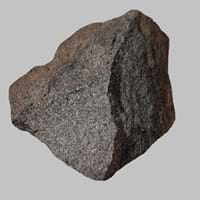Definition
Marl is an unconsolidated sedimentary rock consisting of clay and lime
Appinite is an igneous rock in which the crystals are so fine grained that individual minerals cannot be easily distinguished
Discoverer
Unknown
Unknown
Etymology
From Old French marle, from Late Latin marglia
From the variety of Lamprophyre Greek lampros bright and shining + porphureos purple
Class
Sedimentary Rocks
Igneous Rocks
Sub-Class
Durable Rock, Soft Rock
Durable Rock, Medium Hardness Rock
Group
Not Applicable
Plutonic
Other Categories
Fine Grained Rock, Opaque Rock
Coarse Grained Rock, Fine Grained Rock, Opaque Rock
Texture
Earthy
Porphyritic
Color
Beige, Brown, Green, Grey, White
Black, Bluish - Grey, Brown, Dark Greenish - Grey, Green, Grey
Durability
Durable
Durable
Appearance
Rough and Dull
Dull, Banded and Foilated
Interior Uses
Decorative Aggregates, Floor Tiles
Decorative Aggregates, Homes, Interior Decoration
Exterior Uses
As Building Stone, Roof Tiles
Paving Stone, Garden Decoration, Office Buildings
Other Architectural Uses
Curbing
Whetstones
Construction Industry
Cement Manufacture, Construction Aggregate, for Road Aggregate, Making natural cement, Raw material for the manufacture of mortar
As Dimension Stone, Cement Manufacture, for Road Aggregate, Making natural cement, Manufacture of Magnesium and Dolomite Refractories
Medical Industry
Not Yet Used
Taken as a Supplement for Calcium or Magnesium
Antiquity Uses
Artifacts, Jewellery, Sculpture, Small Figurines
Artifacts, Monuments, Sculpture, Small Figurines
Commercial Uses
Creating Artwork, Soil Conditioner
An Oil and Gas Reservoir, As a Feed Additive for Livestock, Gemstone, Metallurgical Flux, Production of Lime, Soil Conditioner
Types
Clay Marl ,Blue Marl, Red Marl, High Bank Marl, Shell Layer Marl, Under Shell Layer Marl, Sand Marl, Green Marl, Grey Marl and Clayey Marl
Not Available
Features
Generally rough to touch, Is one of the oldest rock, Splintery, Very fine grained rock
Always found as volcanic pipes over deep continental crust, Host rock for Diamond, Is one of the oldest rock, Surfaces are often shiny
Archaeological Significance
Monuments
Not Yet Used
Used
Famous Monuments
Not Applicable
Data Not Available
Famous Sculptures
Data Not Available
Data Not Available
Formation
Marl forms when very fine-grained clay particles are deposited in water which settles at the bottom of water bodies and are compacted by overlying sediment; the water squeezes out and hence forming Marl rock.
The formation of Appinite takes place deep beneath the Earth’s surface at around 150 to 450 kms, and are erupted rapidly and violently.
Mineral Content
Calcite, Clay, Dolomite, Gypsum, Micas, Pyrite, Quartz
Amphibole, Carbonate, Garnet, Micas, Olivine, Phlogopite, Pyroxene
Compound Content
Aluminium Oxide, NaCl, CaO, Iron(III) Oxide, Silicon Dioxide
Aluminium Oxide, NaCl, CaO, Iron(III) Oxide, FeO, Potassium Oxide, MgO, MnO, Sodium Oxide, Silicon Dioxide, Titanium Dioxide
Types of Metamorphism
Not Applicable
Burial Metamorphism, Cataclastic Metamorphism, Contact Metamorphism, Hydrothermal Metamorphism, Regional Metamorphism
Types of Weathering
Biological Weathering, Chemical Weathering
Chemical Weathering, Mechanical Weathering
Types of Erosion
Chemical Erosion, Coastal Erosion, Water Erosion, Wind Erosion
Chemical Erosion, Water Erosion, Wind Erosion
Grain Size
Very fine-grained
Fine to Coarse Grained
Fracture
Conchoidal
Conchoidal
Porosity
Highly Porous
Very Less Porous
Luster
Dull
Subvitreous to Dull
Cleavage
Not Available
Conchoidal
Toughness
2.6
Not Available
Specific Gravity
2.2-2.8
2.86-2.87
Transparency
Opaque
Translucent to Opaque
Density
2.4-2.8 g/cm3
2.95-2.96 g/cm3
Resistance
Heat Resistant, Impact Resistant
Heat Resistant, Impact Resistant
Deposits in Eastern Continents
Asia
India, Pakistan, Russia
Russia
Africa
Ethiopia, Kenya, Morocco, South Africa
Angola, Botswana, Cameroon, Ethiopia, South Africa
Europe
Austria, France, Germany, Greece, Italy, Romania, Scotland, Spain, Switzerland
England, Hungary, Iceland, United Kingdom
Others
Not Yet Found
Antarctica, Greenland
Deposits in Western Continents
North America
USA
Canada, Mexico, USA
South America
Colombia, Ecuador, Peru
Argentina, Colombia, Ecuador
Deposits in Oceania Continent
Australia
New South Wales, Victoria, Western Australia
New South Wales, New Zealand, Queensland, South Australia, Western Australia










